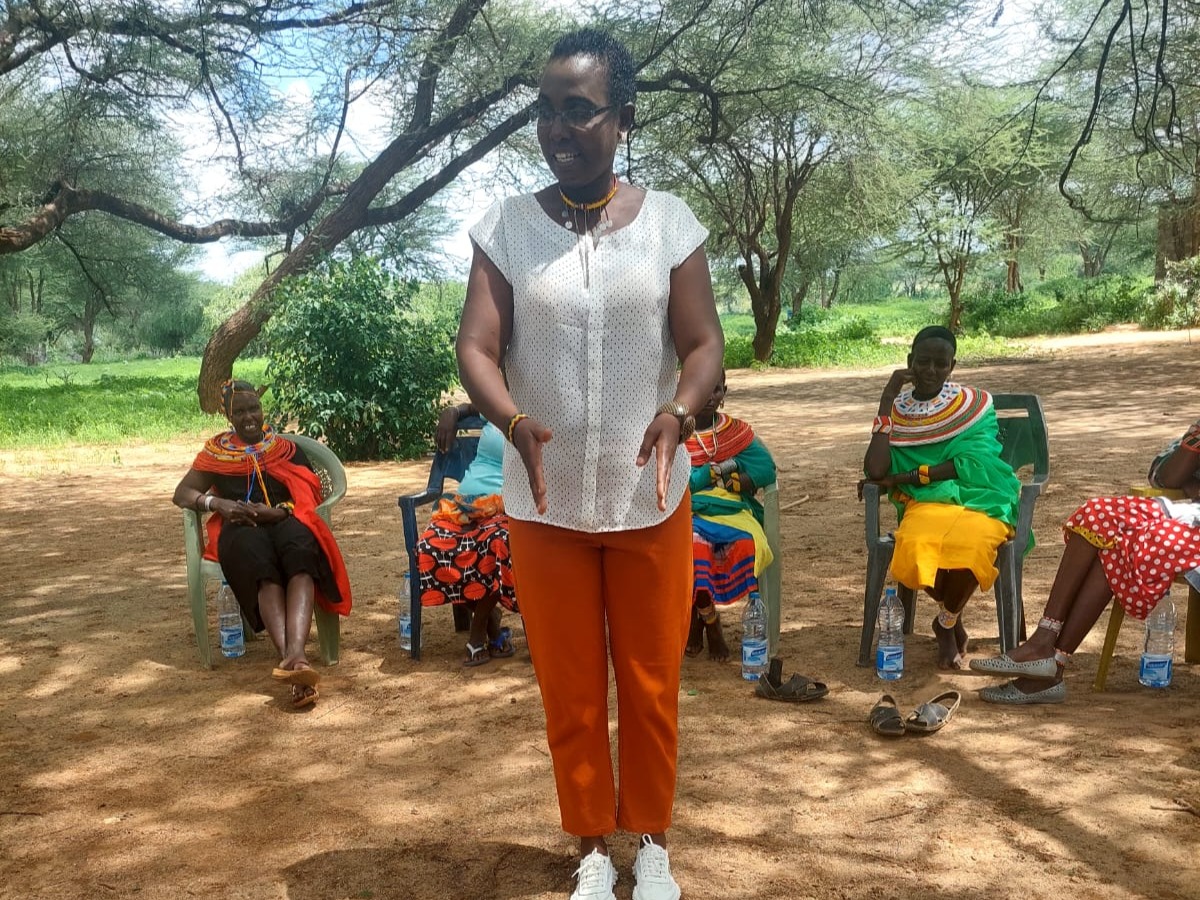Challenging gender norms in conservation

Community member using the ‘fixed position tool’. Credit - Veronicah Lekopole.
Promoting equitable gender norms to strengthen conservation governance and impact
Over the last decade the importance of gender in conservation has increasingly been recognised. Whilst significant progress has been made, the approaches taken often do not challenge the status quo and women tend to remain marginalised within conservation interventions, particularly in relation to leadership and decision-making. Efforts tend to address the symptoms rather than the underlying causes of gender inequality, so the harmful gender norms and power relations that prevent women from equitably participating in, and benefiting from, conservation interventions remain. Approaches to gender have also tended to focus only on women, rather than on men and women, and the relations between them. Men are also affected by gender norms and for them to be sustainable, actions to promote gender equality must include both men and women.
Working with two community conservancies in Kenya, Fauna & Flora is supporting men and women to challenge harmful gender norms and practices, and promote more equitable alternatives as a means to strengthen conservation governance, and ultimately to improve conservation impact. The participants, including board members, conservancy staff members, and the wider community, are being supported to identify, explore, and challenge harmful gender norms and practices particularly, but not exclusively, as they relate to conservation leadership and governance.
A culturally and socially embedded approach
In Kenya’s northern rangelands we are working with Sera Wildlife Conservancy. Here, Samburu culture is rich in storytelling and proverbs. For example, Samburu folklore says that wild animals are the lost domestic livestock of women, so the cattle became buffalo, the donkeys became zebra and so on. Such stories can provide a useful starting point for discussions on gender norms and attitudes, and their impact on conservation practices and outcomes. On Kenya’s northern coast we are working with Pate Marine Community Conservancy and three constituent Beach Management Units. Here, similarly, religious and cultural beliefs are used to explain certain practices and behaviours that prevent women’s active participation in marine activities and governance. For example, if women are engaged in fishing they will ‘lose value’ and that ‘religion prohibits women from leading’.
 A community member shares his story of personal transformation. Credit - Veronicah Lekopole.
A community member shares his story of personal transformation. Credit - Veronicah Lekopole.
With the support of local facilitators and staff from CARE Kenya, the project is adapting and learning from an innovative approach called Social Analysis and Action (SAA) which has been developed by CARE as a community-led social change process, empowering vulnerable communities through the advancement of equitable gender, social and power norms.
In both sites, the process started with training sessions during which participants were encouraged and supported to reflect on gender and power norms within their communities, as well as their own personal values, beliefs and behaviours. The training was designed to be fully accessible to all participants, including those who have no formal education. Traditional tools like PowerPoint presentations were replaced with participatory techniques and hands-on exercises conducted in local languages. The “fixed position” tool, for example, sparked critical discussions on the limitations of having a ‘fixed position’ and the value of multiple perspectives in leadership and decision-making.
After the training, ‘early adopters’ have emerged and have been supported through regular visits to carry out reflective dialogues within their own communities and, where possible, to develop and implement their own action plans to support change. The gender norms and practices that are the focus of these plans are specific to each context, and have been identified and analysed with the participants themselves. This, and the way the initial training and ongoing process is facilitated, is important because it helps to generate ownership and commitment to the SAA process going forwards.
Transformative impacts
The two-year project has already had profound impacts. In Sera, of the 30 community members trained, over 21 (13 men and 8 women) remain active, engaging their peers in dialogues that have reached approximately 1577 people (around 654 men and 883 women). Participants, men and women alike, are driving change through their own personal behaviours and actions, for example by challenging stereotypes, by actively supporting women’s voices and leadership, and through advocating for inclusive decision-making.
“After the training, I realised I was burdening my wife like a donkey.”
The shift in attitudes is evident in personal stories. For example, a male community member told us, “After the training, I realised I was burdening my wife like a donkey.” He now helps her with household chores and has started assigning chores to his male children so that as they grow, they learn that men can do tasks that are widely believed to be for women as well as to support the women and girls in their lives. Another said, “I don't care what my peers say about me doing traditionally feminine tasks. Other men would mock me, taking photos of me carrying water and doing household work. But because I knew I was doing the right thing I didn't care.”
A female staff member shared, “I’m more motivated to work because now I am being listened to by my male colleagues, which was not happening before. My husband has seen this, and I have gained his respect at home.”
“I’m more motivated to work because now I am being listened to by my male colleagues, which was not happening before. My husband has seen this, and I have gained his respect at home.”
We have seen changes at board level too. The tools used during the training, and the fixed position tool in particular, are reported to have triggered a lot of personal reflection amongst board members. The chairman now gives women more opportunities to speak in meetings and a male board member admits that he is now making decisions that he would not have made before. He is more appreciative of the varied needs of the community and the fact that board members should provide space for everyone in the conservancy. He shared, “There are a lot of changes taking place in me… The training humbled me.”
The process in Pate is in the earlier stages but again, we are seeing promising results with at least 23 early adopters (10 men and 13 women) committed to taking the process forwards. One male participant shared that since the training, “I have been able to have an open mind about gender. Women are valuable human beings as well.” A female participant reported, “Women are now given the opportunity to actively participate in meetings” and one group of participants expressed a desire that a woman be voted in as chair in the next conservancy elections.
“Women are now given the opportunity to actively participate in meetings”
A broader vision for conservation
One notable aspect of this initiative is its focus on sharing learning, ensuring that the insights gained from this project are accessible and actionable both for Fauna & Flora and others, in Kenya and beyond. This will include the development of guidance for practitioners, including practical tools, on gender transformative approaches for conservation. Alongside this, we are analysing the data generated from this project to increase understanding of how norms act as barriers or enablers of gender equity and improved conservation governance, and consequently conservation outcomes.
Many conservation organisations are placing people at the heart of their conservation strategies. Understanding and addressing gender norms and relations is something we should do not just for ethical reasons, but for practical reasons too. By fostering gender and social equity, we unlock the potential of entire communities, paving the way for conservation governance that benefits people and nature alike.
Written by Helen Anthem. For more information on this Darwin Initiative Innovation project DARNV016, led by Fauna & Flora, please click here.

 Back
Back